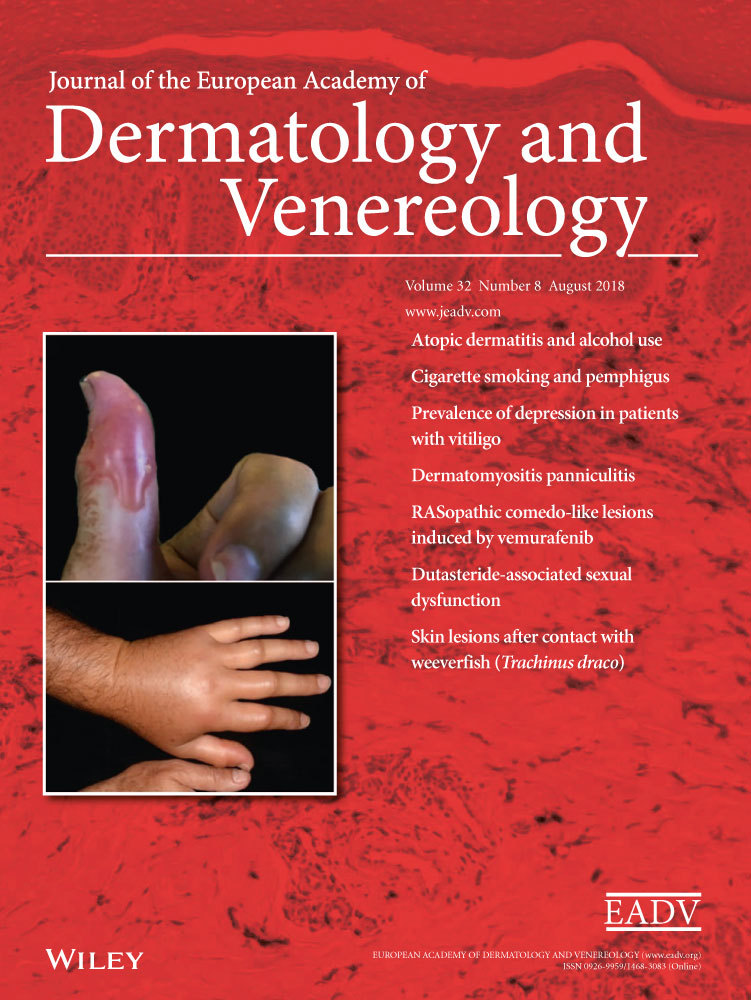Dermoscopy vs. reflectance confocal microscopy for the diagnosis of lentigo maligna
Conflicts of Interest
None declared.
Funding sources
This study was supported in part by a medical educational grant from F. Hoffmann-La Roche.
Abstract
Background
Several dermoscopic and in vivo reflectance confocal microscopy (RCM) diagnostic criteria of lentigo maligna (LM)/lentigo maligna melanoma (LMM) have been identified. However, no study compared the diagnostic accuracy of these techniques.
Objective
We evaluated the diagnostic accuracy of dermoscopy and RCM for LM/LMM using a holistic assessment of the images.
Methods
A total of 223 facial lesions were evaluated by 21 experts. Diagnostic accuracy of the clinical, dermoscopic and RCM examination was compared. Interinvestigator variability and confidence level in the diagnosis were also evaluated.
Results
Overall diagnostic accuracy of the two imaging techniques was good (area under the curve of the sROC function: 0.89). RCM was more sensitive (80%, vs. 61%) and less specific (81% vs. 92%) than dermoscopy for LM/LMM. In particular, RCM showed a higher sensitivity for hypomelanotic and recurrent LM/LMM. RCM had a higher interinvestigator agreement and a higher confidence level in the diagnosis than dermoscopy.
Conclusion
Reflectance confocal microscopy and dermoscopy are both useful techniques for the diagnosis of facial lesions and in particular LM/LMM. RCM is particularly suitable for the identification of hypomelanotic and recurrent LM/LMM.




